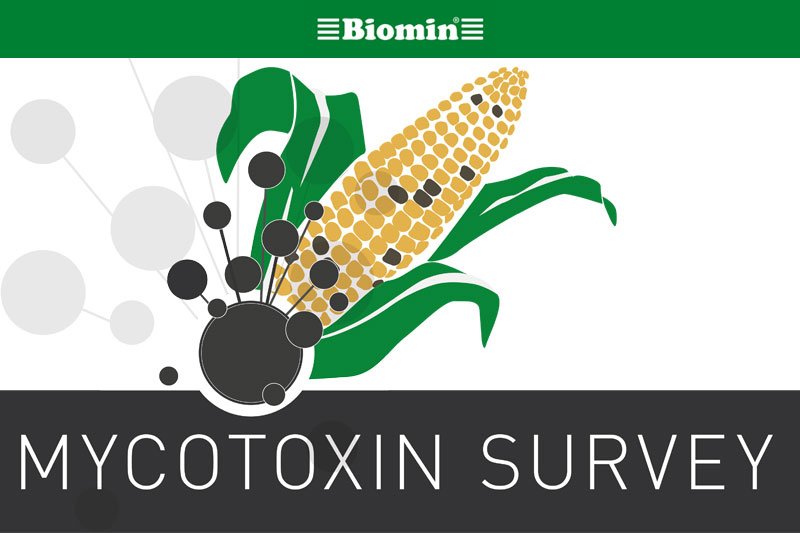Mycotoxin-related threats to livestock production have remained elevated in most regions of the world over the first six months of 2017. This conclusion emerged from more than 33000 analyses conducted on 8452 finished feed and raw commodity samples sourced from 63 countries from January to June 2017 as part of the Biomin Mycotoxin Survey.


Main trends
- Worldwide, deoxynivalenol (DON) and fumonisins (FUM) continue to top the list of most prevalent mycotoxins, found in 81% and 71% of samples, respectively.
- Countries analyzed throughout the Western hemisphere all registered high risk in terms of mycotoxin-related threats to animals.
- Most countries in Asia have shown an increased risk of mycotoxin contamination in the second quarter, compared to the first quarter of 2017.
Tracking corn (maize)
The most common mycotoxins found in corn (maize) samples analyzed from January to June 2017 were fumonisins (90%), followed by deoxynivalenol (84%) and zearalenone (49%).
“Trends in finished feed risk tend to match corn risk over time due to the prominence of corn, or maize, in animal feed,” explained Dr Timothy Jenkins, Mycotoxin Risk Management Product Manager at BIOMIN. He commented that, “the corn risk varies by region with fumonisins issues more common in warmer conditions whereas deoxynivalenol was more common in cooler regions.”
Tracking soya
Deoxynivalenol was the most prevalent mycotoxin in soybean samples worldwide with an incidence of 79%, followed by zearalenone (73%). T-2 toxin, aflatoxins and fumonisins were detected in 39%, 38% and 26% of samples, respectively.
“In the last year and a half, we’ve seen a marked increase in the mycotoxin contamination of South American soy and soy by-products,” stated Dr Jenkins.
Multiple mycotoxin presence
Consistent with results noted in the first quarter of 2017, more than three-quarters of samples analyzed contained two or more mycotoxins—presenting additional risks. Certain combinations of mycotoxins are known to have synergistic effects that aggravate the negative consequences for animals.
“Subclinical symptoms often related to the main Fusarium mycotoxins –deoxynivalenol, zearalenone and fumonisins— can be difficult to detect, but have a greater economic impact for the industry,” observed Dr Jenkins. “Poorer feed efficiency and low growth rates are associated with the presence of low level multiple mycotoxin contamination,” he added.
Industry solutions
Dr Jenkins offered some advice on mitigating the risk associated with mycotoxins. “Avoid contaminated feed when possible, and pay attention to feed storage conditions,” he suggested. Given the widespread occurrence of mycotoxins globally, further steps may be warranted.
“Despite the most strenuous efforts to prevent mycotoxins from occurring, mycotoxin contamination of feedstuffs still occurs. Proven state-of-the-art strategies that adsorb or deactivate toxins in the intestinal tract of animals offer the most reliable, safe and effective solution,” he advised.

August 14, 2017 - Biomin



